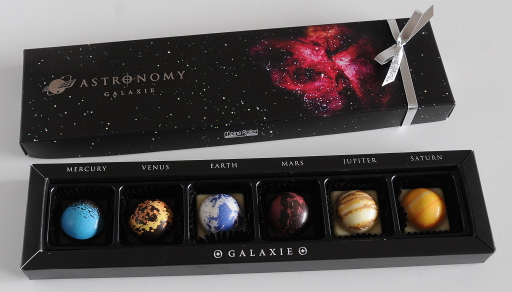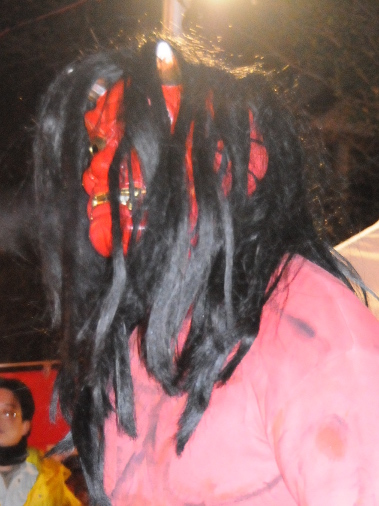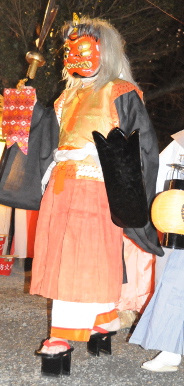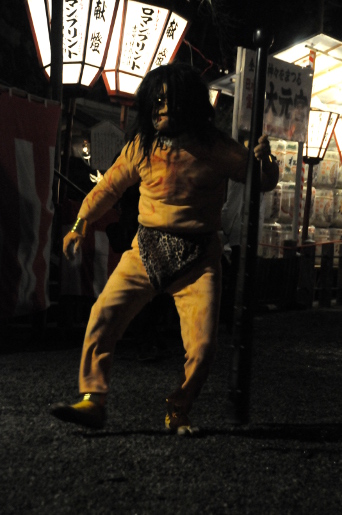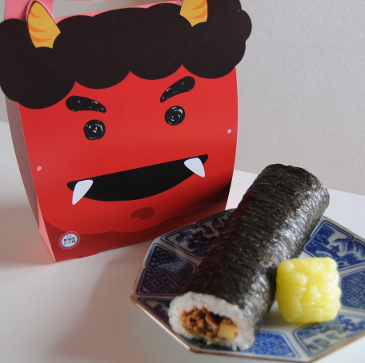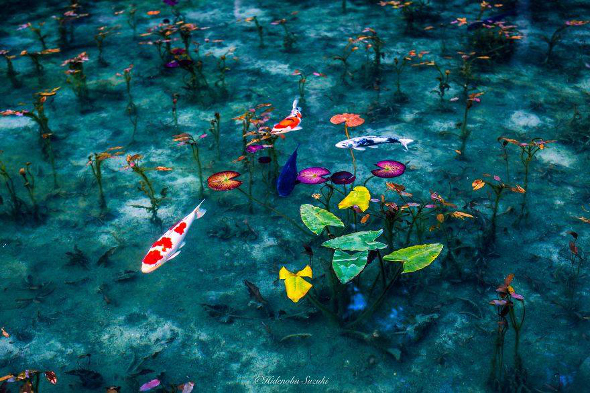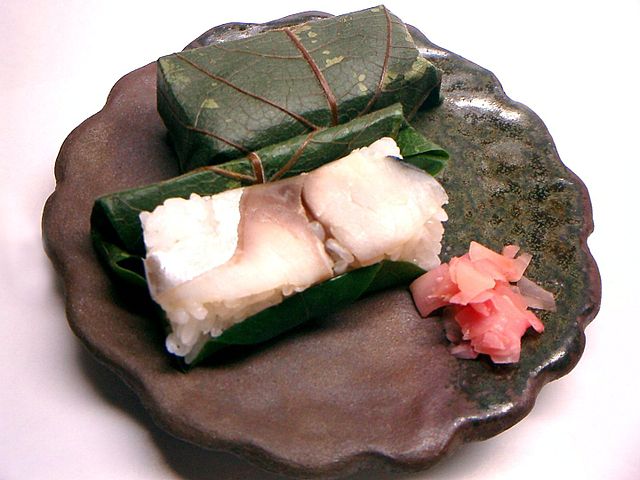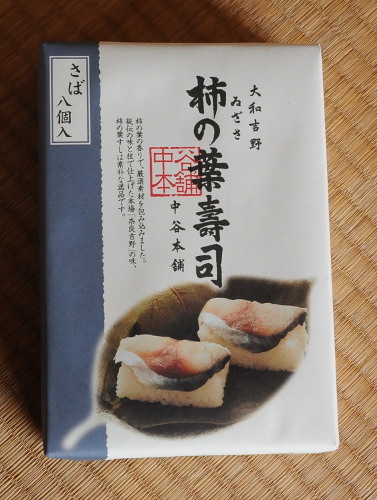Yesterday was Kenkoku Kinen No Hi, the National Foundation Day, which is a perfect opportunity to have a look at the Japanese creation myth. The source used for my summary here is the Kojiki from 712, a fascinating account of Japanese myth that later turns into history, and the oldest surviving Japanese book.
In the beginning, there was chaos. But then, the light and the particles separated and ascended, but because the particles were heavier than the light, they could not rise that high – this is why the light is above everything else, and then there are the heavens and the seas and lands below it.
Five generations of heavenly deities and two generations of earthly deities came into existence, they were neither male nor female, and hid shortly after. Then, five pairs of deities – brother and sister – came into being, the last pair were called Izanagi and Izanami, respectively. To these two the older deities gave the order to make, consolidate, and give birth to the land now known as Japan, and they handed the two siblings a bejewelled spear to do so.
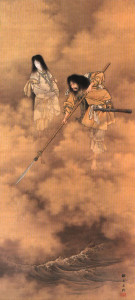 Izanagi took the spear and stirred the oceans with it, and when he lifted the spear out of the waters again, the drops falling from it formed the island Onogoro. On that island, Izanagi and Izanami built a palace with a mighty pillar in its middle. They then decided to procreate as they had been ordered, and to do so, they first circled the pillar in opposite directions.
Izanagi took the spear and stirred the oceans with it, and when he lifted the spear out of the waters again, the drops falling from it formed the island Onogoro. On that island, Izanagi and Izanami built a palace with a mighty pillar in its middle. They then decided to procreate as they had been ordered, and to do so, they first circled the pillar in opposite directions.
When they met on the other side, Izanami spoke first: “Oh, what a beautiful and kind youth indeed!” and Izanagi answered his sister in the same words: “Oh, what a most beautiful and kind youth!” Izanami then went on to bear two children, but they were both misshapen. So, they went back to the heavens to inquire the reason for this, and the elder gods said: “This is because the woman spoke first when you met at the opposite side of the pillar”.
Izanagi and Izanami returned to Onogoro and repeated the ritual of circling the pillar, now taking care that Izanagi spoke first, and henceforth, Izanami bore many healthy children. Their first eight children were the Oyashima, the (then known) major islands of Japan: Awaji, Shikoku, the Oki Islands, Kyushu, Iki Island, Tsushima, Sadoshima, and finally Honshu.
Afterwards, Izanami bore six more islands of Japan, and then began to give birth to a plethora of different gods and goddesses, until she died of the wounds she suffered at the birth of the God of Fire. But that’s another story that’s starting here…
I find this creation story quite interesting. Of course, there are many themes we have seen before: A chaos giving way to order, the first gods coming out of nowhere and giving birth to the land (and many more gods). The interesting part is the story of Izanagi (male-who-invites) and Izanami (female-who-invites), and I am not aware of a similar one.
Even though ordered to procreate, Izanami voluntarily agrees – after an inspection of each other’s bodies – to Izanagi putting “his excess into her scarcity”, a scene that must be so raunchy in the original that the first English translation dares only reproduce it in Latin (for the sake of the reading ladies, obviously). This is a far cry from the common rape and abduction scenes and even the “oh, by the way, you’ll be having God’s child” of Christianity. And even though it is punished immediately, it is the female Izanami who speaks first at what could be interpreted as a wedding ceremony. The story is almost feminist, which I find quite exceptional.
Anyway, the list of eight major islands mentioned in the Kojiki shows its age: At the time it was compiled, Okinawa had not been discovered (that would take another 60 years). And Honshu’s north was so scarcely populated, that even the existence of Hokkaido does not seem to have been common knowledge until the Nihon Shoki – the second oldest book in Japan, also a myth/history compilation – was completed in 720.
If you want to read further in the Kojiki, you can read the very first, 1882, translation into English at Sacred Texts. The footnotes are extensive, but not really needed if you are simply interested in the (hi-) story of Japan. In any case, I might come back at a later time and tell some more Japanese myths.
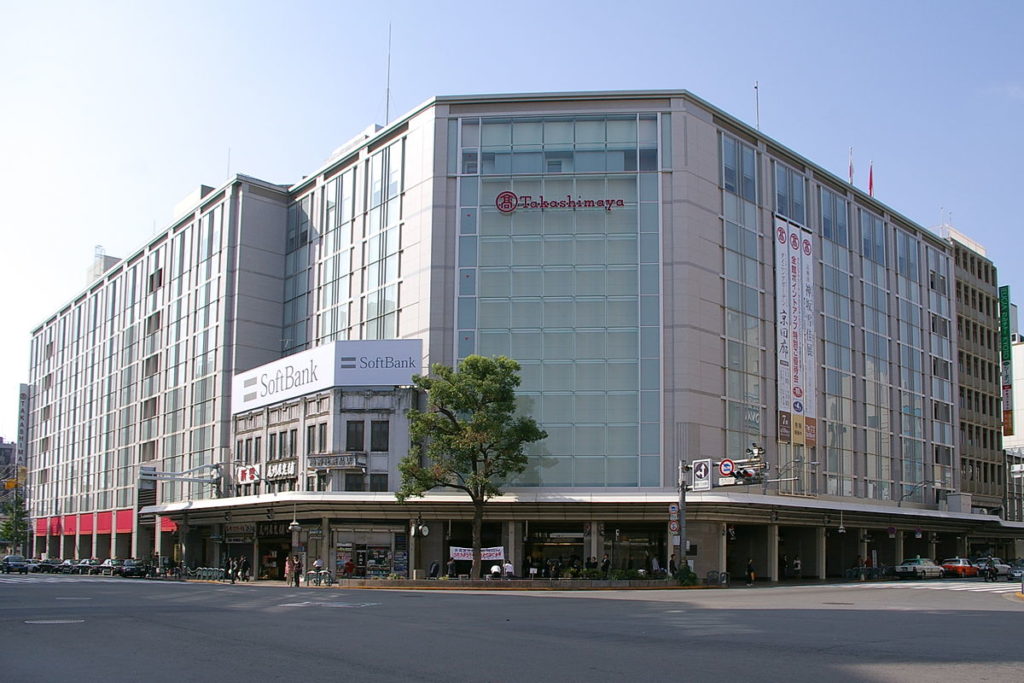 The big building is the Kyoto Takashimaya, one of the largest department store chains in Japan. It was founded in Kyoto in 1831 and moved to this prominent spot in 1948. And at that point already, the owner of the little house on the corner refused to sell to the big developers, and you can see what happened then: Just like what would happen nowadays. You see, in Japan, it’s all about tradition… 😉
The big building is the Kyoto Takashimaya, one of the largest department store chains in Japan. It was founded in Kyoto in 1831 and moved to this prominent spot in 1948. And at that point already, the owner of the little house on the corner refused to sell to the big developers, and you can see what happened then: Just like what would happen nowadays. You see, in Japan, it’s all about tradition… 😉


